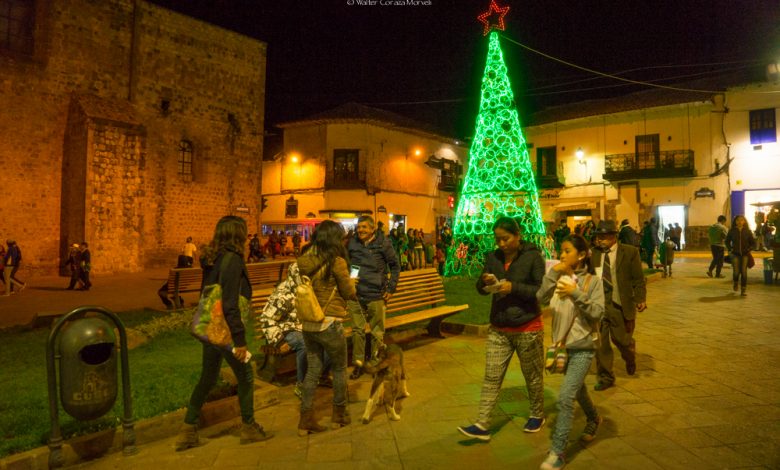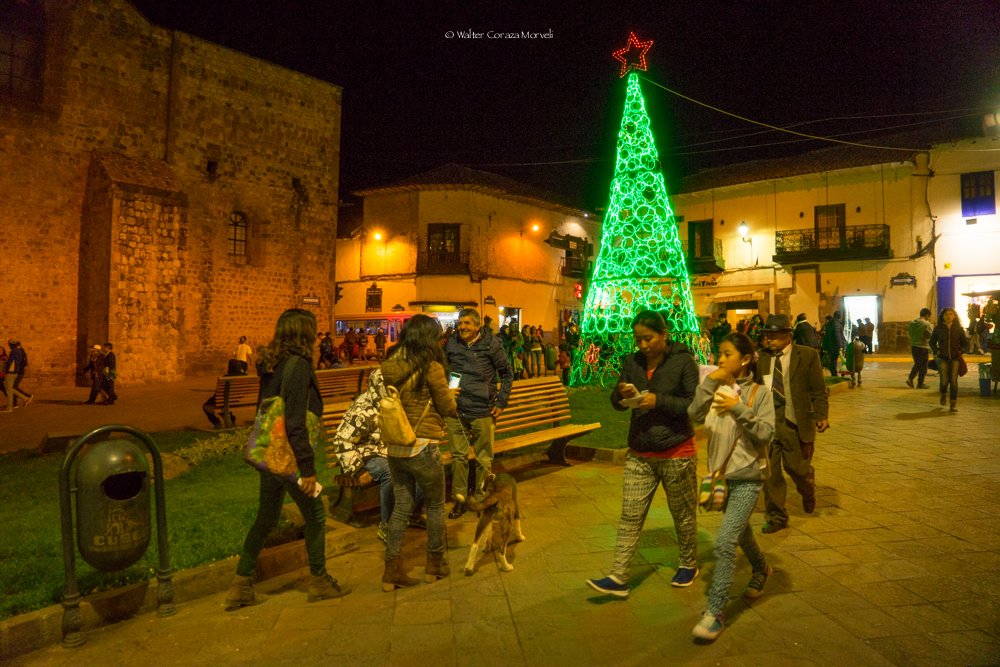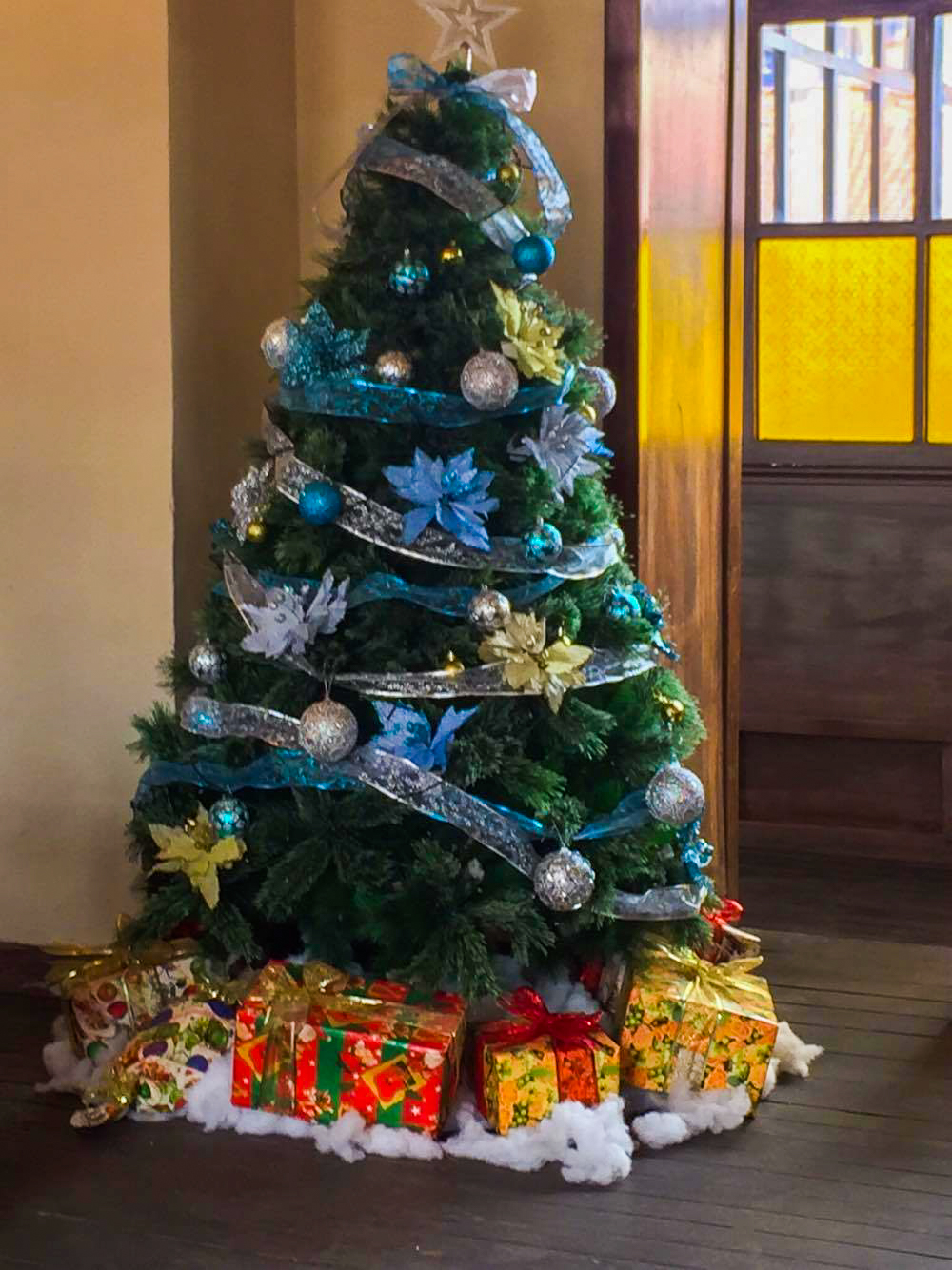Christmas Trees, Here and There

This week in Utah, the annual Festival of Tress was held, and as I gazed in wonder at some of the local trees, I wondered about the use of Christmas trees in Cusco.
Christmas trees have become a standard part of Peruvian Christmas decorations, though not part of classical Latin American Christmas. You’ll see the decorated conical shape of Christmas tree in most main squares for Christmas, in many businesses, as well as in many households.

Intriguingly, the main square of Cusco does not have a tree, although you will see them in other plazas and on some major streets. Although businesses may have trees, the pyramid or conical shape, with indirect references to the importance of platformed buildings of ancient Peru, as well as to Peruvians’ use of other decorated trees, such as use in carnival celebration.
Christmas trees do contrast with the emphasis on nativity scenes in public space. In Cusco a large stable is constructed in front of the Cathedral on the main square with long-necked figures from the famous Mendívil family of Cusco image makers. Another large manger scene claims part of the Qori Cancha park, by the ancient Temple of the Sun and the contemporary Santo Domingo.
Nativity scenes are found in businesses, churches, and in almost every home, besides in public squares.

In contrast, Christmas trees in this Inca city find place in upper middle class homes and increasingly in middle class ones, while the custom has still not been taken up yet by most working class families.
The trees in family homes are artificial ones that people buy in the markets, such as La Molina. I was told most are made in China and imported from there.
While the Christmas tree may have come to Peru with English mercantilism and been consolidated recently by American cultural and economic dominance, its history in Europe contains themes like those we see in Peru.
An early ‘Christmas’ tree may have had less to do with Christmas, but more with the plays that were performed by the Church for people who could not read. Wooden blocks were stacked in the form of a pyramid to form steps, and the tree was paraded around town to advertise “Adam and Eve Day” which was on December 24th. These ‘Paradise Trees’ were decorated to look like a tree with paper, apples and candles. Sometimes they were carried around from house to house, rather than being displayed in a home. (Reference)
The first documented use of a ‘Christmas Tree’ was in Riga,(although it could have been in several other places, which also claim the title of ‘first use of a Christmas tree” in what is now Latvia. The “Brotherhood of Blackhead” organized a celebration for Christmas and New Years. It is interesting to note that the Brotherhood was all unmarried men. (Reference)
Martin Luther is purported to have brought the first tree inside, saying he was inspired by the beautiful stars peeking through the branches while he was walking. He set up a tree inside, ablaze with candles to remind the children of the ‘starry heavens from when Jesus came’. With the help of George III’s German wife, Queen Charlette, the custom was established in Britain, when she would decorate a yew tree with sweets and toys, and invited children could select something from the branches. The tree was lit with candles. (Reference)

Later, Prince Albert would popularize the tree by donating them to schools and army bases. People began to associate the tree with Christmas.
The use of candles made the Christmas tree a fire hazard, until Christmas lights were invented by Edward Johnson, a member of the Edison Electric Light Company.
This evolution of the use of the Christmas tree has led us to our modern history. Trees are becoming more common, yet, the ‘traditional’ tree has evolved from wood to pine to plastic in many cases. Many people use artificial trees rather than cut live trees.
Christmas, with its trees, has spread far and wide. It is now a growing part of Peruvian Christmas.




